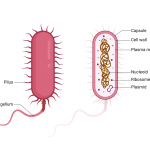Bacterial infections are caused by harmful bacteria invading the body and reproducing, leading to a variety of symptoms and health complications. While some bacterial infections are mild and easily treatable, others can be severe and even life-threatening if not promptly addressed. Understanding the causes, symptoms, and treatments for bacterial infections is crucial for effective management and prevention.
Causes of Bacterial Infections:
Bacterial infections are typically caused by pathogenic bacteria entering the body through various means. These bacteria can be transmitted through direct contact with an infected person, exposure to contaminated surfaces or objects, consumption of contaminated food or water, or through insect bites. Certain factors can increase the risk of developing a bacterial infection, including a weakened immune system, poor hygiene practices, underlying medical conditions, and exposure to crowded or unsanitary environments.
Common Bacterial Infections:
There are numerous types of bacterial infections that can affect different parts of the body. Some of the most common bacterial infections include:
- Respiratory Infections: Bacteria such as Streptococcus pneumoniae, Haemophilus influenzae, and Mycoplasma pneumoniae can cause respiratory infections such as pneumonia, bronchitis, and sinusitis.
- Skin Infections: Bacterial skin infections can result from Staphylococcus aureus, Streptococcus pyogenes, and other bacteria, leading to conditions such as cellulitis, impetigo, and folliculitis.
- Urinary Tract Infections (UTIs): Escherichia coli (E. coli) is the most common bacteria responsible for UTIs, which can affect the bladder, kidneys, ureters, and urethra.
- Gastrointestinal Infections: Bacterial gastroenteritis, often caused by bacteria such as Salmonella, Campylobacter, and Shigella, can lead to symptoms such as diarrhoea, vomiting, and abdominal pain.
- Sexually Transmitted Infections (STIs): Bacterial STIs include gonorrhoea, chlamydia, and syphilis, which are typically transmitted through sexual contact.
Symptoms of Bacterial Infections:
The symptoms of a bacterial infection can vary depending on the type of bacteria involved and the part of the body affected. However, common symptoms may include:
- Fever and chills
- Fatigue and weakness
- Pain or discomfort
- Swelling or inflammation
- Redness or warmth
- Nausea and vomiting
- Diarrhea or constipation
- Difficulty breathing
- Urinary urgency or frequency
- Genital discharge or discomfort
It’s important to note that some bacterial infections may present with mild symptoms initially but can progress rapidly if left untreated, leading to serious complications.
Diagnosis and Treatment:
Diagnosing a bacterial infection typically involves a combination of medical history review, physical examination, and laboratory tests. Depending on the suspected infection, healthcare providers may collect samples such as blood, urine, sputum, or tissue for analysis to identify the causative bacteria.
Once diagnosed, bacterial infections are typically treated with antibiotics, which are medications that target and kill bacteria. The choice of antibiotic depends on factors such as the type of bacteria involved, the severity of the infection, and the individual’s medical history and allergies. It’s essential to complete the full course of antibiotics as prescribed by a healthcare provider, even if symptoms improve before the medication is finished, to prevent the development of antibiotic resistance.
In addition to antibiotics, supportive care may be recommended to manage symptoms and promote recovery. This may include rest, hydration, pain relief medications, and other measures tailored to the specific needs of the individual.
Prevention Strategies:
Preventing bacterial infections involves adopting various strategies to minimize exposure to harmful bacteria and reduce the risk of infection. Key prevention strategies include:
- Practicing good hand hygiene by washing hands frequently with soap and water or using alcohol-based hand sanitizers.
- Following food safety guidelines, such as cooking meat thoroughly, storing food properly, and avoiding cross-contamination.
- Maintaining a clean environment by regularly disinfecting surfaces and frequently touched objects.
- Avoiding close contact with individuals who are sick, and staying home from work or school when experiencing symptoms of illness.
- Practicing safe sex by using condoms and getting tested regularly for STIs.
- Getting vaccinated against bacterial infections where vaccines are available and recommended, such as tetanus, pertussis, and pneumococcal disease.
By incorporating these preventive measures into daily life, individuals can reduce their risk of bacterial infections and promote overall health and well-being.
Bacterial infections are common health concerns that can affect people of all ages and backgrounds. While many bacterial infections can be effectively treated with antibiotics and supportive care, prompt diagnosis and treatment are essential to prevent complications and promote recovery. By understanding the causes, symptoms, and prevention strategies for bacterial infections, individuals can take proactive steps to protect themselves and their loved ones from these potentially serious illnesses.




